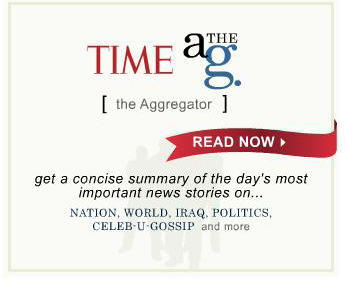New media journalism: Who will pay for news production?

Time magazine, a 80 plus year old mainstream media icon, ended 2006 proclaiming its belief in “you” over mainstream media; “You” made the cover of its annual Person of the Year issue (see "‘Branded Conversations’ frame social media in 2007").
Time begins 2007 paying homage to “you,” and uses the mainstream media of record—The New York Times—to help relay the message to “you.”
In his “A Changing TIME” note to readers in the current issue, Richard Stengel, managing editor, explains radical editorial changes at Time by beginning “I'm not telling you anything you don't know when I say the media world is changing.”
How is Time changing in the hopes of being a relevant destination for “you” in this new media landscape?
In this new dizzying forest of information, it's become even more important to have a trusted guide…We've moved our publication schedule because the news environment has shifted and because we've been listening to you…let's get you the magazine on the weekend when you want it.
Why? Subscribers have been receiving the magazine early in the week, but then “put it aside to read on the weekend.” Moreover, Stengel believes that getting the magazine on newsstands on Friday helps Time “set the news agenda, not just mirror it.”
How will Time “set the news agenda” going forward? “Many news sources give you information; we provide knowledge and meaning,” Stengel puts forth.
Time’s new media embrace relies on presenting news produced by others:
Now you can start your day by checking our news blog, The Ag, which smartly aggregates and summarizes the most important stories from daily newspapers and blogs around the world.

Time’s new signature news effort will be to smartly aggregate news from elsewhere. Time aims to smartly summarize the “day’s most important news stories” on the Nation, the World, Iraq, Politics and Celeb-U-Gossip. The smart summaries will be based off of content produced on someone else’s editorial production dime.
Time says “The Ag is the work of Time's Matthew Yeomans, an early-rising journalist based in Cardiff, Wales”:
Yeomans scours his bookmarks and RSS feeds every weekday morning and writes a digested version of the best stories from hundreds of the world's great newspapers and blogs, giving you all the news you need to read without reading all the news.
Yeomans’ scouring at dawn conveniently provides the Times' audience with the breaking news produced by the world's great newspapers, without the inconvenience of having to visit the producing news organizations to read their original content, or view the ads that support such competitors’ news production.
In the "democratic" news tradition of the Web, Yeomans’ better versions of the best stories of others are sprinkled with new media’s online currency: links.
The lead story today of the Times' “news filtered by our editors” is “US strikes Somalia in the hunt for al-Qaeda”:
The breaking news as you tune in this morning is that the US military has launched new air strikes against suspected al-Qaeda targets in southern Somalia.
Yeomans’ “breaking news” is a standalone “report” created from the content of seven (competing) news organizations, noted below. Yeoman attributes his source content, including links, while Time nevertheless underscores no need to be “reading all the news” appropriated from the sources.
The BBC says,
Reuters quotes,
AP quoting,
CBS news reports,
According to CNN Asia,
According to the WSJ,
As the CSM reports.
Time is cited by AdAge as gunning for “Google News, Drudge, Digg or any other news aggregator out there.”
The New York Times says Time Inc. management seeks to cut costs “to reflect brutal realities in the mass magazine business...with the help of air cover from the consultants from McKinsey”:
At the end of the month, there will be significant layoffs at the magazine division, and it will not end with Time’s 280 editorial employees. Other magazines at the division of Time Warner will also re-engineer and cut as well.
Journalist Yeomans’ “reporting” will displace how many Time editorial employees?
Time may be making shrewd Time-centric business decisions, but what if the producing news organizations Yeomans scours for the “news” he “filters” follow suit?
Who will be producing the news everyone seeks to aggregate without paying for?
With organizations unwilling/unable to pay for news’ production, and readers unwilling/resistant to pay for news consumption, will there continue to be news to aggregate?
News may be a commodity, but valuable commodities cost dearly.